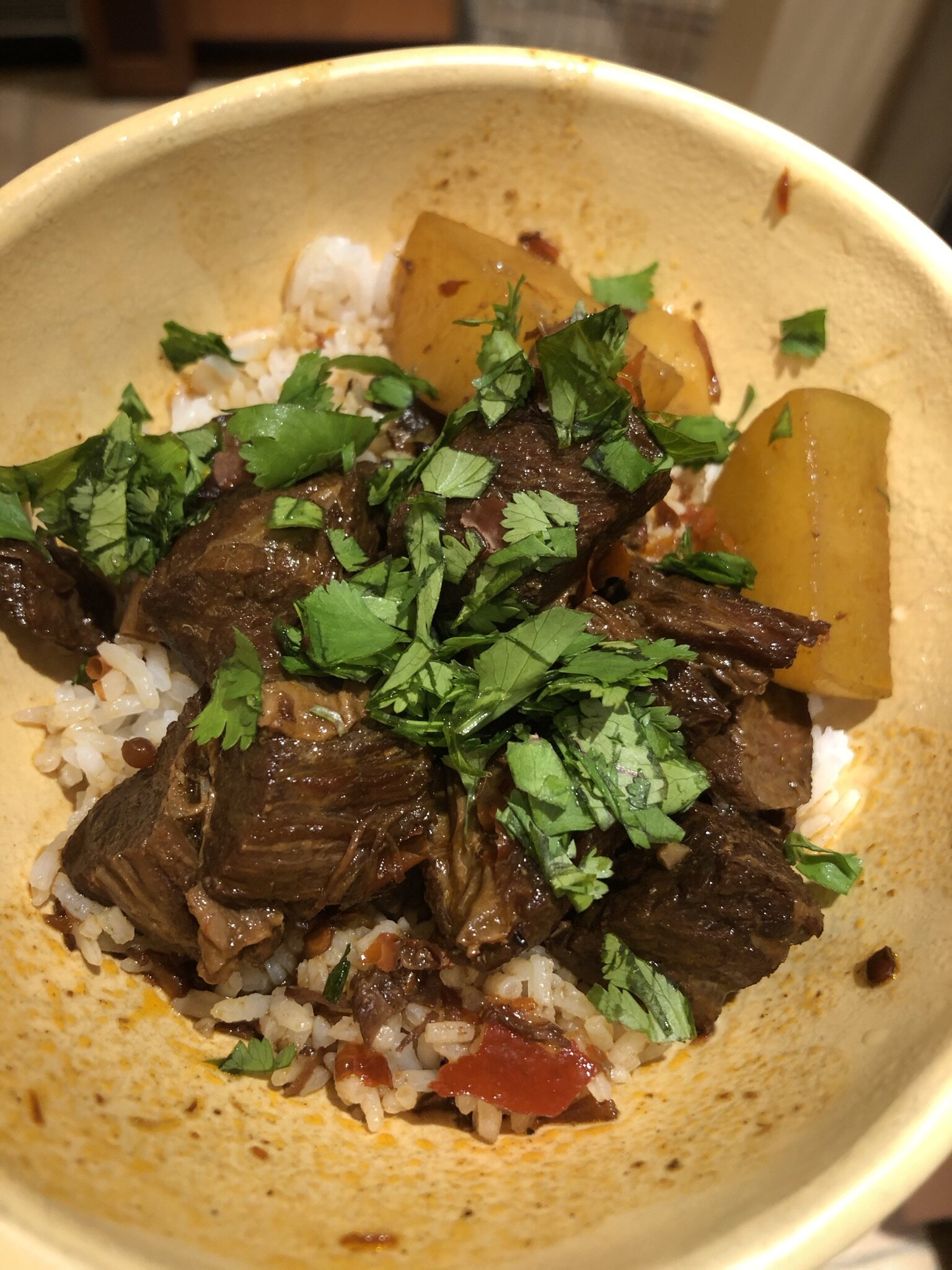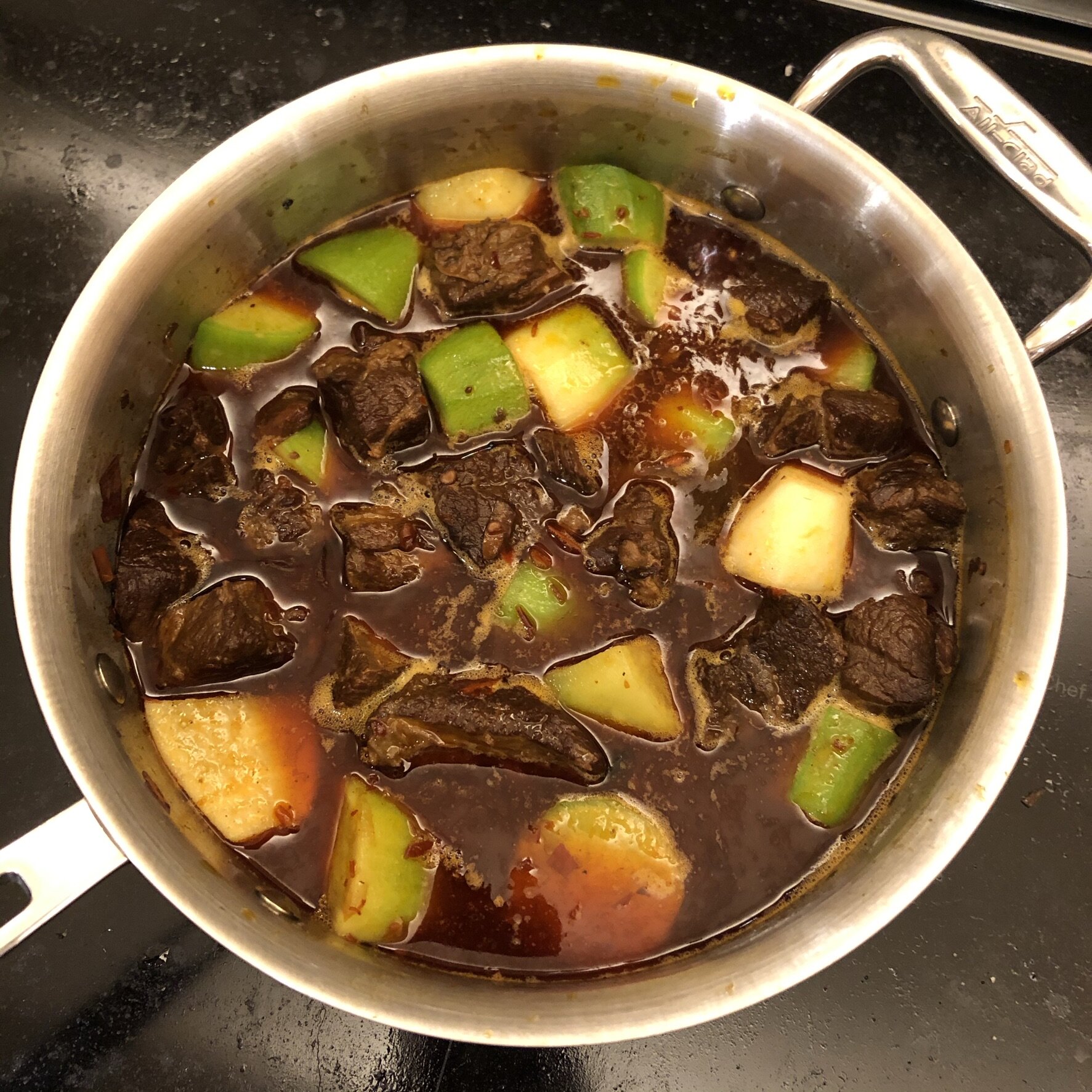The Food of Sichuan
Several years ago, I stumbled across a picture of a steep hill blanked in bright green tea bushes. The green hillside was so bright and dynamic, the threads of grass appeared lit from within. It’s a color I associate with Balinese rice paddies and Vietnamese farms. This particular picture was an advertisement to tour China’s tea growing regions. Although I never attended that tour, I began to follow the tour guide Fuchsia Dunlop.
Fuchsia Dunlop is an English writer and cook who specializes in Sichuan Province. When I received her cookbook The Food of Sichuan as a birthday gift I dove headfirst into recipes for beef stew and “fish-fragrant aubergines.” Fuchsia’s Sichuan recipes were exactly what I had been craving.
To my delight, MAD (an organization founded by chef René Redzepi) hosted a virtual talk with Fuchsia this Monday! Chris Ying, who frequently collaborates on chef David Chang’s media projects (such as “Ugly Delicious” on Netlix), lead Fuchsia through a fascinating interview. Chris and Fuchsia discussed China’s reputation as a food-obsessed culture, China’s long-held love of specialty ingredients, and the differences between Chinese and European fine dining traditions.
After the interview, I kept thinking about Fuchsia and Chris’s discussion about the differences between European and Chinese restaurants. According to Chris and Fuchsia, there are several key reasons why Chinese fine dining restaurants rarely garner Michelin stars.
Source: podchaser.com
First of all, there’s a difference in dining format. Chinese fine dining restaurants are meant to be experienced as a group of eight to ten diners. Dishes are brought to the table and enjoyed “family style,” meaning everyone helps themselves from platters placed at the center of the table. In contrast, many European fine dining restaurants feature “tasting menus,” where one to two diners eat from their own plate — not communal plates. Think about it. If you’re a solo diner in a Chinese restaurant designed to serve large groups of people you can only try a fraction of the dishes on the menu. But if you’re a solo diner enjoying a multi-course tasting menu at a French restaurant you can try everything on the menu. How can a judge possibly assess an entire restaurant based on one dish? Michelin judges who often dine alone can more easily assess European restaurants. It’s no surprise that one of the first Chinese restaurants to earn a Michelin star featured a tasting menu.
Second, there’s a huge difference in wine programs. Chinese fine dining restaurants don’t have a history of wine programs. In contrast, European restaurants pour resources into developing strong wine programs. As a result, Chinese restaurants are often at a disadvantage when it comes to the Michelin judging criteria.
Third, consider how many Michelin judges are well versed in the facets of French, Spanish, or Italian cuisine. But these same judges may not be as familiar with Chinese cuisine. So how can a judge assess a Chinese restaurant if he or she doesn’t know what constitutes good Chinese food?
Source: gourmettraveller.com.au
Fuchsia Dunlop certainly knows how to judge excellent food. At the start of her career Fuchsia completed a professional chef’s course in Sichuan Province. At the time, she was the first white woman to complete the course. Fuchsia is also fluent in Mandarin and the Mandarin edition of her cookbook sells well in China. The very first thing I made from her cookbook was the beef stew. It felt like a solid, well-researched recipe that was neither watered down nor Westernized. If you’ve been craving Chinese food (like I have!) check out Fuchsia’s cookbook The Food of Sichuan. It’s a glimpse into a part of China I can’t wait to visit someday.





